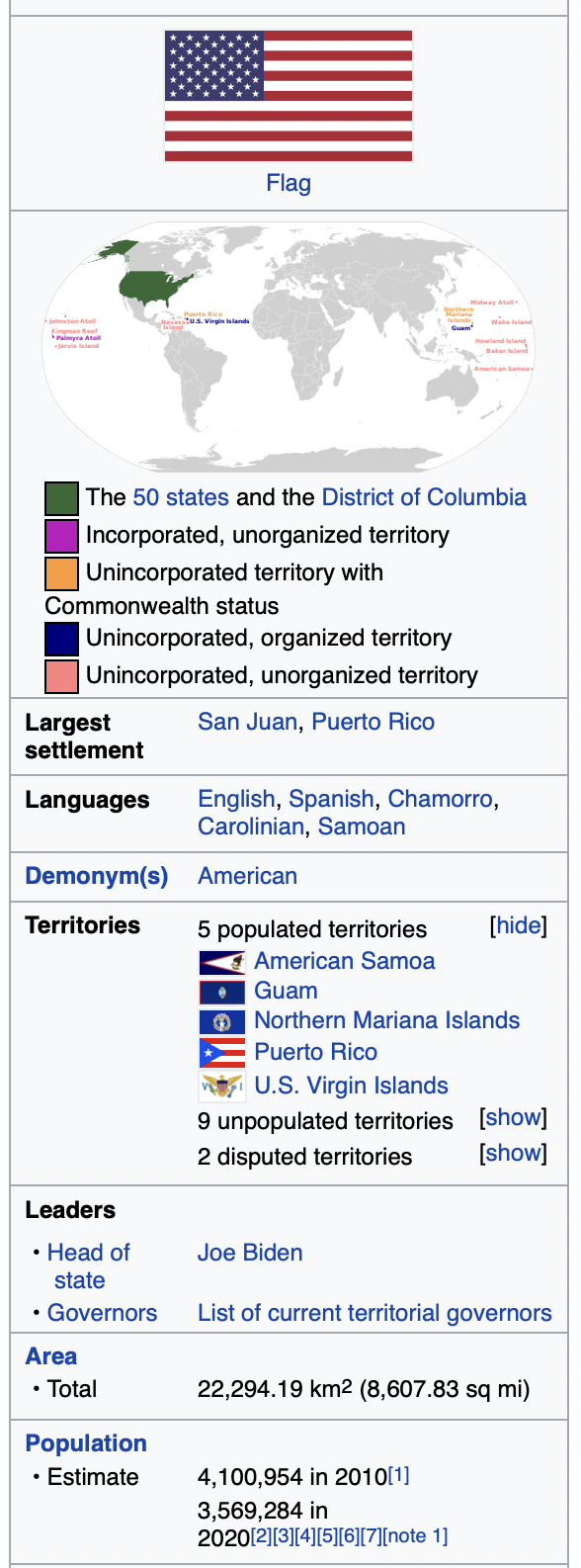U.S. Territories: The Frontlines of Global Competition with China
Must-read analysis by two former officials with top-level experience and expertise!
Alexander B. Gray and Douglas W. Domenech, “U.S. Territories: The Frontlines of Global Competition with China,” RealClearDefense, 11 March 2021.
Alexander B. Gray, a Senior Fellow in National Security Affairs at the American Foreign Policy Council, served on the staff of the National Security Council from 2018 to 2021, including as Director for Oceania & Indo-Pacific Security. Douglas W. Domenech served as Assistant Secretary for Insular & International Affairs at the U.S. Department of the Interior (2017-2021).
Not since the October 1962 Cuban missile crisis has an adversarial foreign power posed a direct military threat in close proximity to the U.S. mainland. Yet as the United States and the People’s Republic of China deepen their long-term competition, U.S. territories and possessions in the Pacific and the Caribbean find themselves on the front lines of Beijing’s malign influence, economic predation, and military ambitions. Washington policymakers have thus far barely recognized the growing threat to vital American interests on our own territory or in adjacent waters.
U.S. territorial equities around the world represent a patchwork of different administrative models and governing arrangements, reflecting the varied histories of American territories and possessions. In the Pacific are the territories of Guam, the Commonwealth of the Northern Mariana Islands (CNMI), and American Samoa. In the Caribbean are Puerto Rico and the U.S. Virgin Islands (USVI). Additionally, the U.S. administers nine possessions in the Pacific (Baker Island, Howland Island, Jarvis Island, Johnston Atoll, Kingman Reef, Midway Atoll, Palmyra Atoll, and Wake Island) and one disputed possession in the Caribbean (Navassa Island).
STRATEGIC GEOGRAPHY
Roughly 3.5 million Americans live in the five U.S. Territories as citizens or nationals. U.S. Census data indicates that the population of Puerto Rico alone (estimated at 3.2 million as of 2019) is larger than that of 20 states. The Exclusive Economic Zone (EEZ) of all U.S. territories and possessions totals over 1.3 million square miles, with the U.S. possessions in the Pacific totaling over 750,000 square miles by themselves.
U.S. territories and possessions remain as strategically significant as they were when originally obtained. Puerto Rico and the USVI sit astride two critical sea lanes: the Mona Passage connecting the Continental United States to South America and the principal container route from the Middle East and Europe through the Panama Canal. Navassa Island, long disputed with Haiti, sits at the Windward Passage’s southern approach between Cuba and Hispaniola, roughly 100 miles from Naval Station Guantanamo Bay.
America’s Pacific possessions were acquired between the 1850s and the early 1900s to safeguard the sea lanes between Hawaii and the U.S. West Coast and East Asia. They play the same strategic role today as they did in the time of President John Quincy Adams, who prophetically wrote in the 1820s that the “furnishing of commerce and fishery extending to the islands of the Pacific… still require that the protecting power of the Union should be displayed under its flag.”
Guam and the CNMI are located in the North Pacific, part of the Micronesian island group that also includes the independent countries of Palau, the Marshall Islands, and the Federated States of Micronesia, with whom the United States have Compacts of Free Association providing guaranteed military access and the right of denial for their use by a foreign power. Guam, only about 1,500 miles from Japan, is home to roughly 7,000 U.S. military personnel, including a U.S. Navy attack submarine squadron and ship repair facility, a major U.S. Air Force base, multiple U.S. Coast Guard cutters, and, over the next decade, 5,000 relocated Marines from Okinawa. Tinian, in the CNMI, will serve as an alternate airfield for U.S. military aircraft.
American Samoa, about 2,000 miles north of New Zealand in the Polynesian island group of the South Pacific, is currently the focus of a feasibility study on whether to base Coast Guard Fast Response Cutters there to uphold regional security and assist local partners in countering China’s malign activity.
Even the United States’ Pacific possessions (grouped collectively as the Minor Outlying Islands) are strategically vital. Located in the North Pacific along the same critical sea lanes between the U.S. West Coast and East Asia that had originally prompted their acquisition in the nineteenth century, these small islands offer welcome, sovereign American territory in the vast expanse of the Pacific.
Situated between Hawaii and Guam, Wake Island is undergoing an $87 million upgrade by the U.S. Air Force to better support flight operations. Both Midway Atoll and Johnston Atoll previously housed U.S. military installations and could be reactivated to provide additional U.S. power projection across the North Pacific. … … …
SUPPLEMENTARY DATA FROM WIKIPEDIA ENTRY ON “TERRITORIES OF THE UNITED STATES”









































